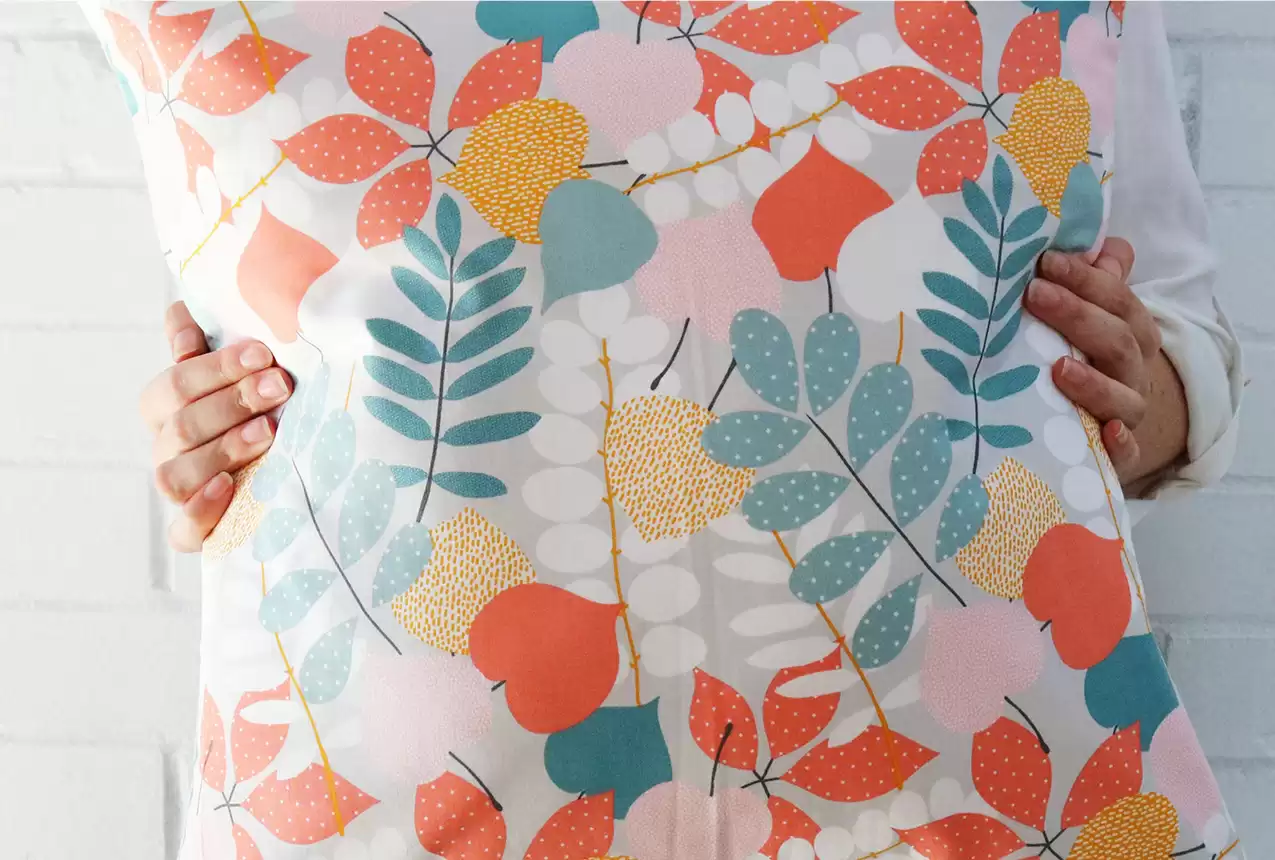Discover Our Playful Multi-Column Layout!
Experience a modern design that balances information and visuals to captivate your audience! Our innovative layout features a striking multi-column structure with an engaging asymmetrical arrangement that highlights a vibrant image alongside essential text.
Original design overview
The original layout consists of two distinct columns. The left column presents clear textual elements, while the right showcases a large, colourful image of a pillow held by hands, drawing attention and communicating a fun, playful theme.
Detailed features
Overall structure
- Multi-column design: The layout is divided into two sections – text on the left and a visually appealing image on the right.
Arrangement
- Asymmetrical composition: The larger image contrasts with the text, providing a dynamic and modern aesthetic.
Element breakdown
- Headers: A compelling header, “Our numbers say it all,” anchors the left column.
- Impressive statistics: Highlight key metrics like “132 Partners,” “65 Locations,” and “782 Success Stories” with brief descriptions.
Visuals
- Stunning image: The right column features a striking, landscape-oriented graphic of a pillow adorned with a floral design, appealing to warmth and creativity.
Typography
- Modern fonts: A contemporary sans-serif font enhances readability with a lively, approachable feel.
Unique design aspects
- Playful colour palette: Bright hues inject energy into the layout, inviting further exploration.
- Balanced use of white space: Thoughtfully applied white space prevents clutter, maintaining visual appeal.
Responsive and accessible
- Adaptable layout: The design adjusts seamlessly to different screen sizes, ensuring your WordPress website looks great everywhere.
- Readability focus: Clear typography and contrasting colours enhance accessibility, promoting better engagement.
10 ways to organise content in WordPress
1. Categories and tags
Use categories to group your posts into broad topics, and tags for more specific details. This method helps users navigate your content intuitively, enhancing the user experience on your WordPress website.
2. Menus and submenus
Create logical menus and submenus to structure your site’s hierarchy. Effective navigation improves usability and can feature prominently in your WordPress website design.
3. Page builders
Use a page builder like [Elementor Alternatives](https://maxiblocks.com/wordpress-websites/wordpress-plugins/wordpress-page-builder/elementor-alternatives/) to design and organise content visually, offering flexibility and creativity.
4. Sidebars and widgets
Enhance your site’s navigation and user experience by leveraging sidebars and widgets. These tools can display categories, tags, recent posts, or other useful links.
5. Featured content
Highlight important posts or pages using featured content areas. This approach ensures your key content is readily visible and accessible to site visitors.
6. Custom post types
Create custom post types for various content needs, such as portfolios or testimonials. This customisation supports diverse content management experiences.
7. A/B Testing
Conduct A/B testing to determine the most effective content organisation. Test different layouts to find what most effectively engages your audience.
8. Responsive design
Ensure your website layout adjusts smoothly to various screen sizes. Responsive design improves user experience across devices, crucial for WordPress websites.
9. Plugins for SEO
Utilise SEO plugins to improve content visibility and organisation. These tools can guide keyword use and improve overall search rank.
10. Page templates
Choose from various page templates to streamline and enhance content organisation. These templates can be customised to match your brand’s needs.
10 different types of content in WordPress
1. Blog posts
Blog posts form the backbone of WordPress websites, providing relevant and engaging content that can be updated regularly to keep audiences informed and interested.
2. Pages
Unlike posts, pages are static and ideal for showcasing content such as “About Us” or “Contact” information, forming the foundational structure of your site.
3. Galleries
Visual content, like photo galleries, enhances engagement. Showcase aesthetics and narratives through curated collections of images.
4. Portfolios
For creatives, WordPress portfolios display work samples elegantly, allowing visitors to explore projects with ease.
5. Videos
Embed videos to enrich the storytelling and engagement aspect of your website. Convert visitors into loyal subscribers with compelling multimedia presentations.
6. Testimonials
Showcase client testimonials to build trust and credibility. This content form is effective in convincing potential customers of your capabilities and success stories.
7. Event calendars
Keep your audience informed with event calendars. This type of content ensures your visitors are aware of upcoming activities and offerings.
8. Forums
Create community interaction through forums, enabling discussions and feedback sharing among users, and enhancing engagement and brand loyalty.
9. eCommerce products
Manage online sales effectively by categorising and showcasing products through WordPress, allowing for easy browsing and purchasing by customers.
10. Podcasts
Publishing podcasts directly through WordPress expands your audience and enriches your content strategy, allowing listeners to engage with your materials on the go.
Conclusion
This layout blends playful modernity with clear communication. Its asymmetrical design, bold typography, and captivating imagery create a visual hierarchy, guiding viewers effortlessly through your key statistics. Elevate your content with this engaging layout and showcase your messages in a fresh and captivating way on your WordPress website builder. By exploring adaptable designs and free templates, you can ensure your site remains both dynamic and user-friendly. Additionally, experiment with Elementor Alternatives for an engaging design experience and discover various free WordPress themes to align with your brand’s aspirations.




